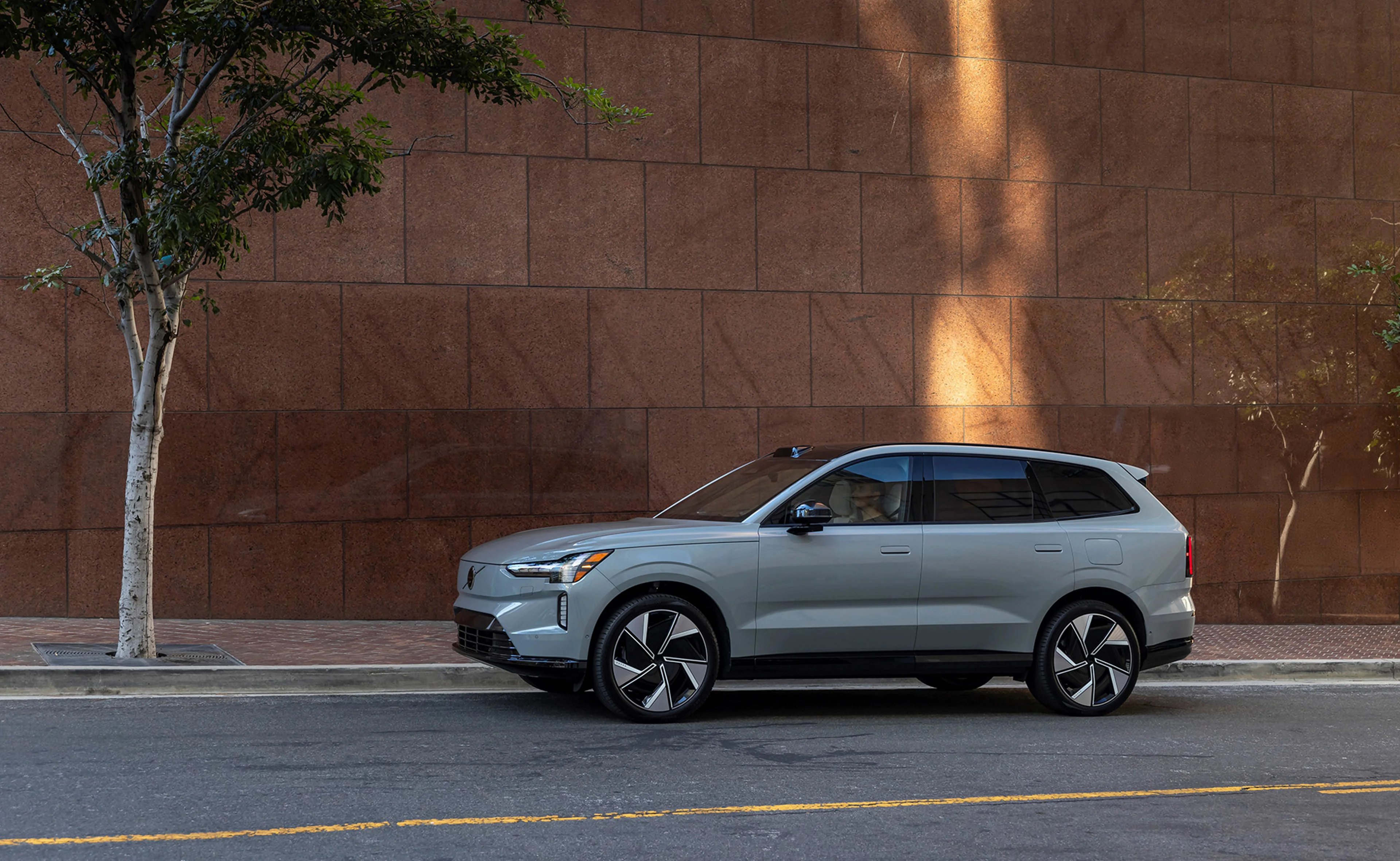Transparency in action: here’s our EX90 carbon footprint report
True to our promise of transparently documenting the environmental impact of our new fully electric cars, we’ve published our life cycle assessment report for our all-electric EX90.

EX90 on the road
Our ambition is to reach net-zero greenhouse gas emissions by 2040, to become a circular business and to progressively reduce our carbon footprint. To make this happen, full electrification remains a key pillar for our company – we already have five fully electric cars on the market, with the Volvo EX90 being the latest, and another five models in development. During the first half of the year, the CO₂ emissions per car were 25 percent lower compared with its 2018 benchmark, a number that’s helped by the ongoing electrification of our fleet. Other initiatives include working to reduce emissions across our supply chain, logistics operations and manufacturing; to recycle, remanufacture and reuse more material and parts; and to improve data transparency and traceability throughout our supply chains.
The reports identify the key contributing materials and processes to the car’s emissions for its life cycle – from the extraction and refining of raw materials all the way through to end-of-life treatment. With the LCA reports, we aim to improve transparency for customers, employees, investors and other stakeholders that are interested in our environmental performance.
Speaking of transparency, that’s one of the main purposes of our life cycle assessment reports (LCA). We’ve promised to document the climate impact of our new fully electric cars, and so far we’ve published reports for the Volvo EX40, EC40, EX30 and now, the EX90. The reports identify the key contributing materials and processes to the car’s emissions for its life cycle – from the extraction and refining of raw materials all the way through to end-of-life treatment. With the LCA reports, we aim to improve transparency for customers, employees, investors and other stakeholders that are interested in our environmental performance. Electrification leading the way The EX90 report, which you can find here, puts the carbon footprint of our flagship SUV in the spotlight. We compare the EX90 with our XC90 plug-in hybrid and mild hybrid models – cars that are similar in size but use different driveline technologies. One of our key findings in the report shows that if you’re charging the EX90 using a European average electricity mix*, its life cycle carbon footprint is about 50 percent lower than the XC90 mild hybrid, and about 20 percent lower than the XC90 plug-in hybrid**. This comparison highlights the fact that electrification can lead to a substantial reduction in climate impact for cars. Charging with wind power? Using wind-generated electricity reduces the carbon footprint of the EX90 significantly: by 35 percent compared to charging using a global electricity mix and by 17 percent compared to using the European electricity mix*. This underlines the importance of the supply and availability of renewable energy across the value chain, particularly during charging, to help fully electric cars reach their full climate potential. Overall, the EX90 also has a lower total carbon footprint than the XC90 plug-in hybrid and mild hybrid models for all sources of electricity used for charging included in the study**. The impact of batteries is still significant. They contribute a notable share of 17 percent of the EX90’s carbon footprint, but even with this number included, the overall climate impact of the EX90 is still significantly less than that of a similar-sized mild hybrid. Read more about our climate action strategies on our Sustainability page. * The EU-27 electricity mix. **The examples used are based on a total driving distance of 200,000 kilometres and energy use according to Worldwide Harmonised Light Vehicle Test Procedure (WLTP) results.